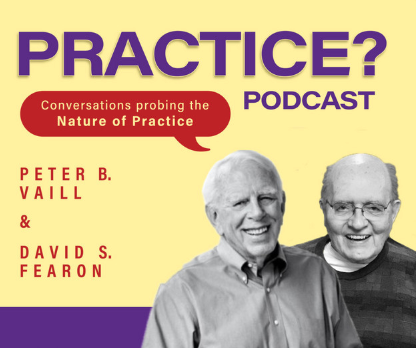Is your website ADA Compliant?
The international standards in digital accessibility for business websites are set by the W3C (World Wide Web Consortium) and is known as WCAG (Web Content Accessibility Guidelines). Section 508 compliance is the requirement for government agencies, non-profits and federal contractors within the United States.
Here are 5 ways to make your website ADA Compliant:
- Your Website Must Be Keyboard-Friendly
This is one the most important first steps to ADA compliance. In layperson's terms, a website needs to work without the use of a mouse. Many assistive technologies depend on keyboard-only navigation. Your website must be built in a manner to use the site’s major features via a keyboard and nothing else. All pages, links and content must be accessible.
Using the Tab key on a keyboard is the most popular way to navigate. This will allow users to move between areas on a page that can have a keyboard focus. Your design goal should be to ensure that all web content and navigation can be accessed using Tab. - Easy Accessibility to Your Content
Although keyboard-friendly navigation is a priority, you should also make sure that all content on the page is actually accessible. This typically is not a challenge; it can become an issue with dynamic page content.
Dynamic content is content that can change without reloading the page. This becomes a challenge when the site doesn’t inform assistive tools of the change. As an example, screen readers may only “read” the site as it's presented on the initial load. Best practice is to make users aware when content shifts or they will miss the new content. - Add Alt Text to All Images
Alt text is a staple of accessible web design. The primary purpose of Alt Tags is to describe images to visitors who are unable to see them. This would include screen readers and browsers that block images and also includes users who are vision-impaired or unable to visually identify an image. - Select Your Colors Carefully
Color blindness is more of a spectrum challenge since different people perceive color(s) in different ways. Pun intended, it is not a "Black-and-white" issue. It's important to make certain the colors you select on your site contrast well and allow users to distinguish between various sections on the page.
The biggest hurdle to overcome is ensuring text stands out against a background. The ADA recommends you set a dark color against a light one, making sure that they don’t bleed into each other. - Create A Clear Content Hierarchy with Headers/Subheads
Another key to make your site accessible is having a clear content hierarchy, or structuring the content by using headers carefully. This will make content much easier for users to consume and improves flow.
In addition, clear headers/subheads better assist screen readers to interpret your pages. In-page navigation becomes much easier when this happens. It is recommended to only use one H1 per page (typically a page title). This can be followed by subheads (H2, H3, H4) and always be used in order.
The Walker Group Digital Marketing Team can help you get your website compliant and then certify it when it meets accessibility guidelines. Reach out to us today for a complimentary consultation by emailing webservices@thewalkergroup.com.
WE ARE PROUD TO BE
More Recent News

FOR IMMEDIATE RELEASE: Farmington, CT – [April 22, 2025] – The Walker Group’s Digital Marketing Solutions (DMS) team is proud to announce its membership in The CT Community Nonprofit Alliance (The Alliance) , reinforcing its commitment to helping local non-profits maximize their impact. As both a Perpetual Purpose Trust-owned business and a social enterprise, The Walker Group operates with a mission-driven approach, making this partnership a natural fit within its business model. By joining The CT Community Nonprofit Alliance, The Walker Group DMS team gains the opportunity to collaborate with a network of organizations dedicated to strengthening non-profits across the state. Through this alliance, DMS will offer its expertise in digital marketing, website development, and strategic communications to help non-profits expand their reach, increase engagement, and amplify their missions—while making the most of their marketing budgets. “We are honored to be part of such an amazing organization that aligns perfectly with our values,” said Jeffery Williams, Creative Director at The Walker Group. “Nonprofits play a crucial role in our communities, and we are dedicated to providing them with the digital tools and marketing strategies they need to thrive.” With a strong track record of working with organizations such as The Root Center for Advanced Recovery, SCADD, and Connecticut Foodshare, The Walker Group Digital Marketing Solutions team specializes in helping non-profits leverage technology to drive awareness, increase donations, and enhance community engagement. As a social enterprise, The Walker Group is committed to using business as a force for good, reinvesting in both its employees and the communities it serves. Through this partnership, The Walker Group DMS looks forward to actively contributing to the nonprofit sector by sharing insights, sponsoring educational events, and advocating for digital transformation within the industry. For more information about The Walker Group's Digital Marketing Solutions agency and its work with nonprofits, visit https://dms.thewalkergroup.com/ Media Contact: Diana Sutcliffe Business Operations & Marketing Director The Walker Group

In today's digital world, cyberattacks are no longer a "what if" —they're a "when." No matter the size of your business or industry, cyberattacks pose a real and growing risk. From data breaches and ransomware attacks to phishing scams and system outages, the cost of a cyber incident can be devastating. This is where cybersecurity insurance becomes critical. A well-structured policy can mean the difference between a swift recovery and financial ruin. However, many companies make the mistake of only reviewing their policy after an attack happens—when it’s already too late. Businesses must proactively review and revise their coverage before an incident occurs to stay ahead of rising threats, evolving regulations, and increasing costs.





